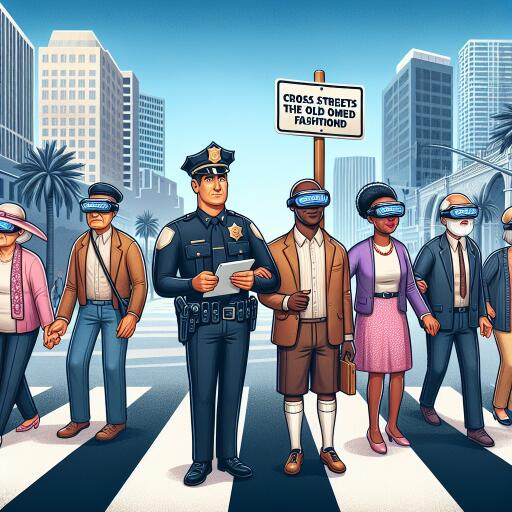San Diego Police Urge Vision Pro Users to Embrace Traditional Street Crossing Methods
In a recent cautionary outreach, the San Diego Police Department has taken to social media to offer advice that might seem straight out of a bygone era: When crossing the street, it’s best to rely on your natural vision rather than the augmented reality of a headset. This guidance comes in the wake of observations of pedestrians navigating city streets with their eyes engulfed in the latest tech gear, notably the Apple Vision Pro headset.
According to the police department, ensuring pedestrian safety is of paramount importance. Through a video shared on their Instagram account, they showcased a real-life scenario where an individual, engrossed in the alternate reality provided by their headset, was crossing the street. This situation unfolded even as officers were handling another incident nearby. The aim? To highlight the critical need for awareness in real-world settings, particularly on the roads.
The message from the department was clear and carried a hint of nostalgia: “Let’s keep the immersive experiences for safe environments. When it comes to crossing the streets, the best practice remains the good old-fashioned way. That means eyes open, head up, and fully attuned to the surroundings—free from any digital distractions.”
While the Vision Pro headset is designed to blend digital content with the physical world through advanced passthrough cameras, allowing users a glimpse of their environment even while immersed in virtual scenarios, the San Diego Police suggest it’s not a perfect substitute for unaided vision. Apple itself, in the Vision Pro’s user guide, hints at potential limitations under certain conditions such as low lighting, or a reduced field of vision that might not encompass peripheral views—likening it to wearing a pair of limiting ski goggles.
This cautionary stance isn’t unique to pedestrian safety. Recent instances of individuals engaging in potentially hazardous activities while wearing the headset, such as driving, have drawn attention from higher echelons of government. A notable example includes a response from Pete Buttigieg, the U.S. Secretary of Transportation, emphasizing the indisputable need for undistracted engagement in driving, underscoring that all modern vehicular assistance technologies still necessitate a fully attentive human behind the wheel.
Further backing the call for cautious engagement with immersive tech, Apple’s own guidelines for the Vision Pro highlight the importance of not using the device in any setting that could result in collisions or endanger the user and those around them—specifically advising against its use in moving vehicles or near thoroughfares.
In an age where the line between digital immersion and real-world interaction continues to blur, incidents like those noted in San Diego serve as poignant reminders of the need for vigilance and the timeless value of common sense, particularly when it comes to safety in our everyday environments.










